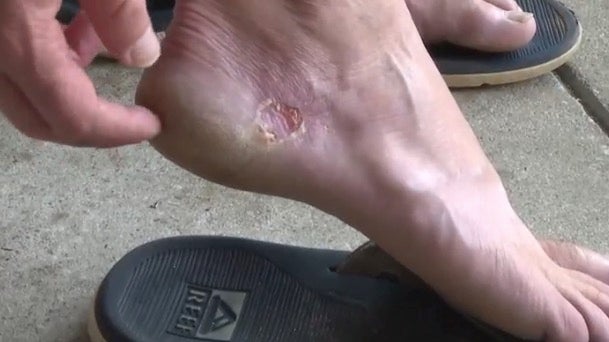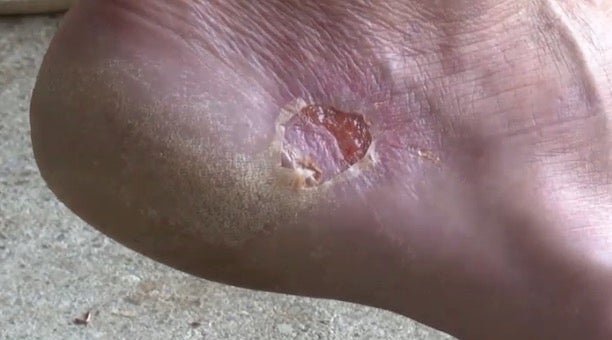Man contracts flesh-eating bacteria infection from walking barefoot on beach
Brent Norman says pain feels like a nail through his foot

Your support helps us to tell the story
This election is still a dead heat, according to most polls. In a fight with such wafer-thin margins, we need reporters on the ground talking to the people Trump and Harris are courting. Your support allows us to keep sending journalists to the story.
The Independent is trusted by 27 million Americans from across the entire political spectrum every month. Unlike many other quality news outlets, we choose not to lock you out of our reporting and analysis with paywalls. But quality journalism must still be paid for.
Help us keep bring these critical stories to light. Your support makes all the difference.
A man has been left unable to walk after contracting a deadly flesh-eating bacterial infection after strolling barefoot across a beach.
Brent Norman, from Charleston, South Carolina, is an avid rambler and has spent his life by the ocean.
The health-conscious man, who walks upwards of 15,000 steps, regularly wanders along the sandy shoreline between Sullivan’s Island and Isle of Palms.
But while embarking on his usual journey last week, Mr Norman stepped on a shell, which wasn’t uncommon given the lesser visibility of rocky terrain during high tides.
“The way the tides were pretty high, I unfortunately stepped on several seashells,” he told local news station WCIV. “I’ve grown up on beaches all my life and stepped on probably over 10,000 shells.”
In the days that followed, Mr Norman began feeling pain radiating from his foot, which quickly developed into a feeling that a nail had been driven through the area.
After a week of increased swelling and agonising pain in his foot, “I was no longer walking,” he said.

On Thursday, Mr Norman’s lower limb looked unsightly, and he finally took himself to the emergency room, where he was greeted by medical staff that frantically sprung into action.
“Everyone behind the check-in counter, their eyes were about double the size they normally were,” he said. “I could tell people were uncomfortable sitting around me looking at it.”
After inspecting his foot, Mr Norman’s doctor gave him a bombshell diagnosis: his foot was infected with vibriosis – caused by the vibrio bacteria.
“[The nurse] lanced it, removed the debris from in there, and then they gave me an antibiotic shot and then also pills that I’m taking for two weeks,” he said.
Mr Norman had likely contracted the salt tolerant bacteria by stepping on a shell in the ocean.

Some infections caused by vibrio lead to necrotising fasciitis, a severe infection in which the flesh around an open wound dies.
While there are 12 species of vibrio, only one is known to be flesh-eating, according to the Centers for Disease Control and Prevention (CDC).
The public health agency said that the bacteria is responsible for an “estimated 80,000 illnesses and 100 deaths in the United States every year”.
Most cases stem from eating raw or undercooked seafood or exposing an open wound to sea water, the CDC states. Infections are most common during the warmer months between May and October.
Despite the ordeal, Mr Norman said he has no qualms about heading back to the beach once his foot has healed.
Subscribe to Independent Premium to bookmark this article
Want to bookmark your favourite articles and stories to read or reference later? Start your Independent Premium subscription today.
Join our commenting forum
Join thought-provoking conversations, follow other Independent readers and see their replies
Comments